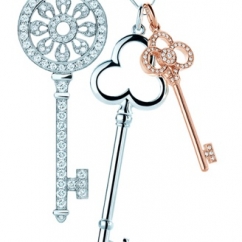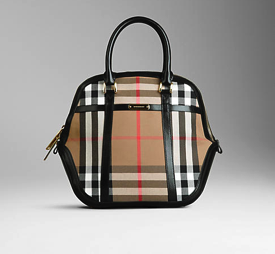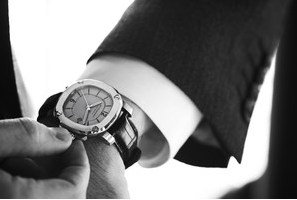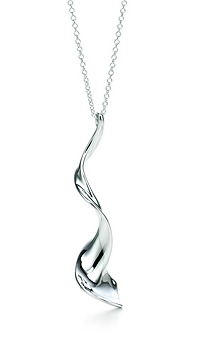Articles and News
EDITORIAL: WHY TIFFANY’S SLOWDOWN DOES NOT FORETELL A DROP IN LUXURY SPENDING | October 10, 2012 (1 comment)

Merrick, NY—When Tiffany & Co. earlier this year announced a slowdown in sales and warned of a softening of the luxury market as the reason why, it sent a frisson of worry through the entire luxury sector. And when the U.K.’s Burberry did the same last month, pundits began prognosticating that the post-recession return to luxury spending had run its course.
Not so fast. Let’s examine what’s going on in the luxury market. By now, one would have to be living under a rock not to know that what happens to luxury sales in China will have significant impact on luxury brands’ bottom line globally. The Greek crisis and subsequent uncertainty throughout the Euro-zone also is a drag on sales.
In the macroeconomic sense, these factors matter to American jewelers. The world is waiting with bated breath to see what happens in Europe, and of course Chinese demand will affect both price and supply of luxury goods. But true luxury consumers—the ones who always had money and who weren’t leveraged to the eyeballs—emerged from the recession intact and fully capable of spending as before, and there’s no reason to think that’s changed.
Many luxury brands—and independent luxury jewelers—are doing just fine, thank you very much. So is it possible that the slowdowns at Tiffany and Burberry are not harbingers of disaster but instead simply mean some changes are needed at both companies?
I believe that to be the case. And according to at least one report, from Reuters, I’m not alone in that assessment. According to Reuters, the luxury market, like everything else, is becoming segmented, with some brands like Hermes, Prada, Dior, and Balenciaga doing very well, while Tiffany, Burberry, and others that haven’t caught up to changing tastes, are suffering.
Prada, for example, posted a 59.5% jump in net profit for the first half of the year, and expects to be on track for double-digit growth in stores open at least a year. Fellow Italians Bottega Veneta and Salvatore Ferragamo also are doing well. French luxury house Dior sees no slowdown, including in China. But some bigger global names, like Louis Vuitton and Ralph Lauren, are experiencing a few bumps, and getting back to Tiffany and Burberry, neither has had a “must have” product in a long time.
U.S. consumers’ taste for luxury has shifted away from ostentation and toward understated quality. Now Chinese consumers—who until recently were dependably fond of logos and flash—are beginning to make the same shift, which is not good news for companies like Louis Vuitton, with its famous signature LV canvas or its equally-recognizable Damier pattern. Ditto Burberry. Its signature red, tan, and black plaid is simply not as popular now as it was 10 or even five years ago, and the brand also has been noticeably absent of sought-after “It Bags,” another area where it used to be a formidable contender.

A Burberry bag in the house's signature plaid.
The brand is working to appeal to more understated luxury tastes. Earlier this month, its new high-end watch, The Britain, bowed at top Burberry doors and selected retailers worldwide. According to this article in Women’s Wear Daily, the watch references the brand’s iconic trench coat in the shape of the case, which is reminiscent of the D-rings on the coat’s belt and trim, and in trench-coat colors on its face and hands. But the iconic plaid design is not in evidence. Prices begin at $1,795 and top out at $4,995.

Burberry's new Britain watch is understated to appeal to today's luxury tastes. Photo: Courtesy of Burberry for Women's Wear Daily.
Tiffany, meanwhile, needs a shot of the right kind of new. Its big launches like the Key Collection (top of page) and the Frank Gehry collection haven’t been enough to sustain the kind of volume the firm is used to. The keys are beautifully done with just the right balance of contemporary and timeless appeal—but unless one is obsessed with keys, it’s not a category people are likely to keep collecting. So the jeweler needs to keep finding new customers for its keys, a far more costly and challenging proposition than selling more of them to existing customers.
As for the Frank Gehry collection, it’s very avant-garde. Early pieces were quite sculptural, geared to a sophisticated customer. While there's certainly a contingent of consumers who get it, the vast majority of Tiffany shoppers are looking for updated classics, not sculpture. Pieces in the collection today, such as the pendant below, seem to be targeted to more mainstream tastes.

Frank Gehry's silver Orchid pendant for Tiffany.
Tiffany is doing a lot right. It’s far more digitally savvy than most of its competitors, and it gets repeated kudos for clever use of video and other state-of-the-art digital marketing strategies. It’s also a leader in corporate social and environmental responsibility, an area that is increasingly important as the socially conscientious Millennials mature into their peak earning years.
There are lessons to be learned from Tiffany. But unfortunately, as the jeweler’s sales have shown of late, all the digital excellence in the world won’t make a sale if the customer doesn’t find a product she craves enough to buy.
Tiffany photos from Tiffany.com.







